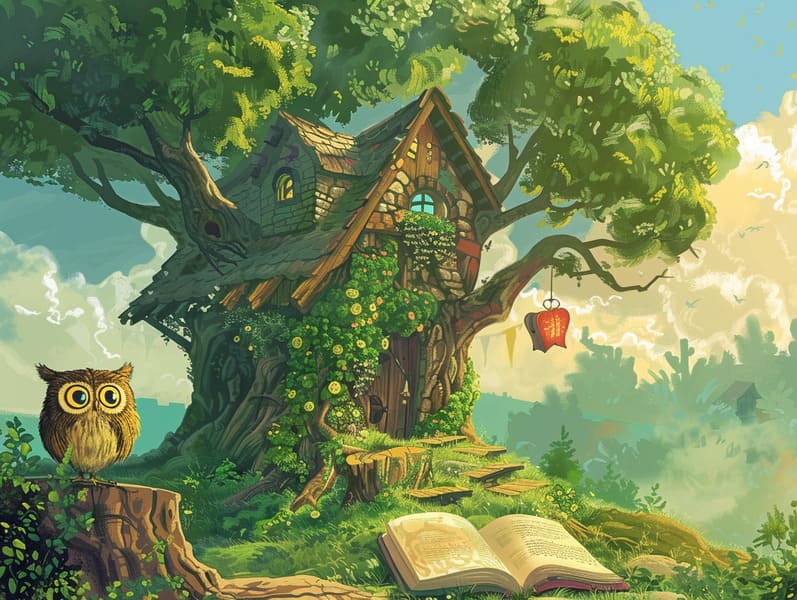The Story Behind Children's Fairy Tales and the Unfading Spell.
The Story Behind Children's Fairy Tales and the Unfading Spell.
Blog Article

Children's fairy tales have deep roots. These tales have been told from one generation to the next long before they were ever transcribed. They originated from a variety of traditions, including Western traditions. They were initially passed along among mature audiences, often carrying themes and messages relevant to the societal norms and beliefs of the time.
The Brothers Grimm, Jacob and Wilhelm Grimm, were among the first to collect many of these beloved tales. Their compilation, "Grimm's Children's Stories," included tales like "The True Bride," "Little Brother and Little Sister," and "The True Story of Snow White," which have since become mainstays in the world of iconic fairy tales. Similarly, Andersen's fanciful tales, such as "The Mermaid's Tale," and "The Little Duckling," have captured hearts worldwide, establishing their place in the pantheon of iconic fairy tales.
Despite being ancient, fairy tales remain as pertinent as ever, especially as bedtime stories for kids. These charming stories are now available in different formats, including artistically illustrated books, fantastical animations, and digital storybooks.
Their lasting presence can be connected to several whimsical characteristics:
Valuable Lessons: Old fairy tales often whisper important moral lessons. Narratives like "The Tale of the Boy Who Cried Wolf" teach the importance of being truthful, while "The Story of the Tortoise and the Hare" show the qualities of persistence and modesty. These narratives offer the young clear distinctions between ethical and unethical, developing their moral compass in a subtle yet impactful way.
Compassion and Knowledge: Classic fairy tales frequently include personalities facing problems and hurdles, inciting audiences to sympathize with their struggles and cheer for their triumphs. For instance, "Beauty's Beast" emphasizes the merit of looking past the exterior to realize the inner being of a individual, advancing kindness and recognition.
Cultural Perception: Many old fairy tales are imbued with the cultural contexts from which they blossomed. Learning from these tales can provide fascinating glimpses into different customs, developing a sense of global respect and appreciation.
Creativity and Fantasy: The whimsical elements in traditional fairy tales—fairy godmothers—enliven children’s fantasy worlds. These fairy tales move readers to extraordinary realms, engendering inventive dreams and a sense of mystery that continues a lifetime.
Old fairy tales are not only spellbinding but also informative. They function as spellbinding tools in advancing various intellectual and emotional capacities in young readers. When ancient fairy tales are narrated, they develop language proficiency by introducing new phrases and sophisticated sentence structures. This practice also fosters listening skills and concentration, as young readers concentrate deeply, eager to see what happens next.
Furthermore, reflecting on the themes and characters of timeless fairy tales can foster reasoning skills and intellectual skills. Little ones are led to see patterns, guess what will happen, and comprehend cause and effect. These examinations also facilitate young ones verbalize their thoughts and feelings, contributing to their emotional intelligence.
In today’s information age, the prevalence of online storybooks has made these narratives more accessible than ever. Web-based platforms and applications feature wide arrays of popular fairy tales that can be accessed or heard anytime, anywhere. Fairy tales read out loud are particularly liked, supplying an fascinating method for young ones to delight in these entrancing tales. Narrated books and read-to-me stories carry characters and settings to life, often enhanced by fantastical soundtracks and tunes that heighten the tale-telling adventure.
The timeless allure of timeless fairy tales lies in their ability to change to new eras while holding onto their core values. Contemporary updates of these tales often include more different protagonists and modern settings, making them relatable to today’s audience. However, the basic principles of bravery, kindheartedness, and honesty remain unchanged, continuing to affect listeners of all ages.
Fairy tales also offer a sense of familiarity and comprehensibility. They present to a well-arranged narrative with a distinct beginning, middle, and end, often finishing with the termination of conflicts and the triumph of good over evil. This dependability can be heartening for the young, introducing a sense of reliability in an always shifting world.
Timeless fairy tales continue to spellbind and coach new generations, maintaining get more info their splendor and value in modern society. As bedtime stories for kids, they provide a perfect blend of delight and instruction, boosting moral values, empathy, and creativity. The availability of online storybooks and the prevalence of fairy tales told out loud guarantee that these traditional fairy tales remain attainable to new generations.
By sustaining and imparting these tales, we continue to praise the rich tapestry of fantasy and cultural heritage. Whether you are exploring a vividly illustrated book, exploring a web-based collection, or listening via an read-aloud story, the radiance of classic fairy tales is always within reach. These stories teach us of the unchanging influence of narratives and its ability to gather us across centuries and lands.
Even if you are viewing a vibrantly illustrated book, discovering a digital library, or listening through an read-aloud story, the radiance of popular fairy tales is always within reach.
These fairy tales reveal of the ageless ability of narratives and its ability to bind us across generations and cultures, making a tie that fascinates and enlightens alike.